|
(no longer with us, but not forgotten)
___________________________________
___________________________________
BARROW, JR., WALTER J.
| BEASLEY, BILLY J. |
|
|
| May 1957 (B-57) |
___________________________________
BLAHUS, FREDERICK A.
(died in nonflying accident
in 1975)
| BOWLING, JAMES R. |
|
|
| September 1956 (T-33, Del Rio) |
BROWN, SAM
Morris "Jack" Coleman
| Cepurneek, Howard C. |
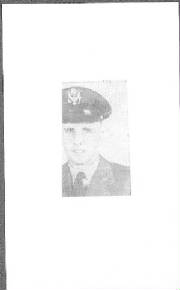
|
CEPURNEEK, HOWARD C.
CRAIG, DAVID
| CORBETTA, RICHARD L. |
|
|
| 1957 (T-33, MacDill) |
| Cummings, Jack C. |
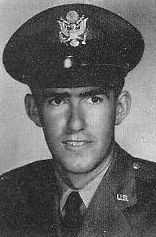
|
|
Jack C. Cummings
Following graduation from pilot training Jack Cummings went to Sheppard AFB in Wichita
Falls, Texas an attended the Auditor General course to become a Contract Auditor
and taught a contract audit course until assigned to the Milan, Italy
audit office.
Arriving in Milan in December 1956, Jack was responsible for the audit
of the Air Force contract with Republic Aviation for the transfer of F-84 aircraft to European countries. For
the next year this entailed spending two weeks in Lugarno Switzerland,
where Republic had their European headquarters and then back to Milan for two
week at Sia Marchetti that was performing the IRAN of C-47 aircraft. Flying proficiency was maintained
by monthly trips to Aviano AB to fly C-47s after hours
around Europe.
In 1958 Jack was assigned to the audit office at Rein Main AB in Germany
to audit a variety of research and development contracts with universities and industry in Germany,
Belgium, and France
as well as the modification of F-84s being given to Germany.
Proficiency flying was again maintained flying the C-47 throughout Europe including the Berlin
corridor, Athens, Greece, Tripoli,
Egypt, etc.
1959 found Jack at the SABENA Plant in Brussels, Belgium
auditing the IRAN contracts for a number of Air Force aircraft
before being transferred to Mather AFB, Sacramento, California.
From 1960 to 1966 Jack flew T-29s for navigator training around the western United
States before being assigned to Air Command and Staff
College in 1966 where he also took advantage of the opportunity to get a Masters
degree. Flying proficiency was again in the C-47. Completing the command and Staff
College and masters program in August of 66 resulted in an assignment to the Phyllis
Ann program with duty at Tan Son Nhut, Saigon, Vietnam.
After going through the training pipeline at Hulbert Field, Florida,
Alexandria, Louisiana survival at Fairchild AFB, Washington
and jungle survival in the Philippines, Jack arrived in Vietnam.
One hundred and forty four missions and 1000 hours later flying the EC-47, out of Tan Son Nhut, Hue
Phui Bai, Pleiku, and Danang, Jack was assigned to the Education with Industry Program with duty at the Boeing Company in
Seattle, Washington from 1967 to 1968.
Upon completion of the EWI program an assignment with the Defense Contract Administration Service as Chief of the
Portland Oregon Office was forthcoming. This office was responsible for much of the wood products being
sent to Vietnam as well as major component for the Navy’s
nuclear submarine program and the Navy’s Mark 48 torpedo program. Proficiency flying was maintained with the Oregon
National Guard in a C-54 and T-29.
1972 saw Jack assigned as the Director of R & D Procurement for the Air Force Systems Command (AFSC) at Wright
Patterson AFB, Ohio. This unit was responsible for support
of the six AFSC laboratories in Area B heavily involved in the early space and airborne laser programs. The
first pilot training simulator was contracted for by this unit as was a good deal of the F-16 program. As
a side note this was the unit that leased the aircraft to CALSPAN that John Mitchell was involved with.
The Washington D.C. area called in 1974 and
Jack was assigned to AFSC first as the Chief of R & D and Base procurement and then as the Director of Contract Management.
This assignment was primarily a policy job for AFSC wide coverage of procurement activities. Flying
proficiency was maintained in the C-118 until excused from flying.
This was the final USAF assignment and Jack retired in August of 1976.
Jack went to work for the Energy Research and Development Agency that shortly became the Department of Energy in
1976 at the Richland Operations Office in Richland, Washington (Hanford Site) as the Director of Contracts and Procurement.
Besides competing and selecting a billion dollar site operating contractor the job included the selection and award
of major construction contracts for nuclear facilities and nuclear research. To keep his hand in flying
Jack acquired a new Rockwell Commander 114 for flying around the greater northwest.
1981 found Jack out of government and starting his own consulting business in Bellevue,
Washington. This business provided assistance to both industry and government
in dealing with federal procurement issues.
Jacks wife Betty survived this whole adventure working for newspapers, as a teacher and later as a real estate
agent all the while raising three children. We have three grown children and two granddaughters who with their parents live
in Clackamas, Oregon where their mother is a stay at home
mom, very active in school activities and Mary Kay. Our oldest daughter and her husband live in Bend,
Oregon where she is a teacher and our son lives in Enumclaw,
Washington with his wife, Chinese born Yin Huan, and is a district systems engineer for
Dictaphone.
Jack died on Flag Day in 2009. He received a full military funeral presided by the local VFW the following
week.
| |
___________________________________
___________________________________
__________________________________
| DEJONG, FREDERICK J. |
|
|
| 2002 ( Natural) |
___________________________________________
DURKIN, CHARLES R.
Evans resigned in 1972 as OU's head wrestling coach because he became disillusioned
with recruiting. “These days, you have to recruit the wrestler, his mom
and dad,” Evans told a reporter at the time. “When I came to OU as a wrestler, I went to the coach and convinced
him I belonged here. “Now, it's almost as if I have to beg the athlete to come
to OU, to offer him something that no one else does. You have to be a big talker with a big line and that's not the way I
am.” As the years have drifted by, Evans' greatness has been forgotten or overlooked
by some in the wrestling world, but not by those who knew him best. “He was the predecessor
to Gable,” Abel said. “He was just a great, great wrestler.”
Read more: http://newsok.com/former-ou-wrestler-tommy-evans-was-superman-on-the-mat/article/3594099#ixzz1WRMc1wvwFormer OU wrestler Tommy Evans was Superman on the mat
BY ED GODFREY, Staff Writer, egodfrey@opubco.com
 1 1
Published: August 12, 2011

Former OU wrestler Tommy Evans. Photo by The Oklahoman Archive
Multimedia
On the mat, Evans was fierce and unrelenting. Off the mat, he was a gentle giant. “Tommy
was really a mild-mannered guy, not boisterous in any way shape or
form,” said Bud Belz, a former University of Oklahoma wrestler and pupil
of Evans. “But when he was on the mat, he was a completely
different person. He was so tough and so aggressive. The toughest guy I
ever met in my life.” Evans, who also coached two national championship wrestling teams at OU in 1960 and
1963, will be inducted posthumously in the Oklahoma Sports Hall of Fame on Tuesday night. Evans died in 2008 at age 77. A two-time high school state champion at Tulsa Rogers, Evans was an NCAA champion in 1952 and 1954 at 147 pounds. He
was the outstanding wrestler of the tournament both years. The only
reason he didn't win in 1953 was because a knee injury sidelined him. Evans finished his collegiate career at OU
with a 42-1 record. His only loss came as a sophomore in the 1951 NCAA finals. He
won three national AAU titles and was the Pan American champion in
1955. He also was a silver medalist in the 1952 Olympics, although Stan Abel, who succeeded Evans in 1972 as OU's wrestling coach, said it is widely believed he deserved the gold. In wrestling,
Iowa's Dan Gable is considered by many to be the greatest wrestler of all time. Abel calls Evans the Dan Gable of his era. Wayne Baughman, an Olympic coach who headed the wrestling program at Air Force for 27 years, thinks Evans would have beaten Gable. “A
lot of people will argue that point, but there is no question in my
mind,” said Baughman, who wrestled for Evans at OU. “I think Tommy would
have pinned him. I don't think there is anybody that has come down the
road that is better than Tommy.” As a coach, Evans would often wrestle against his own athletes after practice.
“I thought he was going to kill me,” said former Sooner and 1972 Olympic gold medalist Wayne Wells. “I
didn't think I was going to make it. He would make me stay and wrestle
with him after practice. Every day he would get me in a headlock that
would almost bring tears.” Evans expected his wrestlers to work as hard as he did when competing. “No
one left his wrestling room that wouldn't be doggone tired every day,” Abel said. Evans
was a fierce competitor at everything. He often played racquetball
against his Sooner wrestlers and “wouldn't let you leave until he
finished thrashing you,” Belz said. Outside of his greatness on the mat, Evans possessed another attribute
that everyone admired: his honesty. “I
don't know of another coach that can say he never had a controversy
with an athlete,” Wells said. “No one didn't get along with Tommy. He
never alienated anyone. He was just so impeccably fair and evenhanded.
He was so easy going.” Said Abel: “I can't imagine Tommy ever lying to anybody. Most everyone who wrestled
for Tommy loved him.” Evans
also was an accomplished pilot and served three years in the Air Force
following his graduation from OU. In fact, he missed the 1961 season as
OU's head coach because he was recalled to active duty in the Berlin crisis. After coaching, he served in the Army National Guard. Evans resigned in 1972 as OU's head wrestling coach because he became disillusioned with recruiting. “These
days, you have to recruit the wrestler, his mom and dad,” Evans told a
reporter at the time. “When I came to OU as a wrestler, I went to the
coach and convinced him I belonged here. “Now, it's almost as if I
have to beg the athlete to come to OU, to offer him something that no
one else does. You have to be a big talker with a big line and that's
not the way I am.” As the years have drifted by, Evans' greatness
has been forgotten or overlooked by some in the wrestling world, but not
by those who knew him best. “He was the predecessor to Gable,” Abel said. “He was jus
|
Golder, Ted W.
Theodore W. Golder
On April 27, 1956, immediately
after receiving my
wings and commission, I was married at
the Laughlin
AFB chapel. Subsequently, I went to “Aircraft
Observer
Training for Pilots” school at
James Connally
AFB, Waco, Texas and graduated with
Navigator/Bombardier ratings.
I was then assigned to
the
98th Bomb Wing at Lincoln AFB, Lincoln, Nebraska
where I flew the B-47E until May of
1963. My next
assignment
was a three-year Air Force Institute of
Technology (AFIT) undergraduate Industrial
Engineering
program at Arizona State
University in Tempe, Arizona
which was completed in January 1966.
After receiving
my degree I was sent to Sheppard
AFB,
Wichita Falls, Texas as Chief of the Management
Engineering Detachment.
This job entailed measuring
the
productivity and cost efficiency of the various
base activities and studying the overall
need for
military manning or
the cost effectiveness of using
Federal civilians versus contract civilians to provide
base
support services.
My “secondary job” was as a
C-54 base flight pilot flying some 400 hours
in 40
states in just eight months.
Received
orders assigning me to Hurlburt Field, Fort
Walton Beach, Florida in January 1967 where
I received
training in the C-123
for cargo hauling and the “Ranch
Hand” agent orange program (never flew).
After
training I was assigned
to Nakom Phanom RTAFB,
Thailand in an unique program called ”caddlesticks”
–
flying night missions
as a forward air controller
(FAC) logging 200 combat hours in 50 missions over
Laos
and North Vietnam. Five months
into my tour I
was sent TDY to Bangkok’s Don Muang RTAFB to instruct
Thai
pilots in C-123 combat tactics.
During my year,
I logged 900 hours in the C-123.
Back from southeast Asia in
March of 1968 I returned
to SAC
with B-52 training at Castle AFB, Atwater,
California and subsequent assignment to
Barksdale AFB,
Shreveport, Louisiana.
While at Barksdale, in July
1969 I returned to SEA on one”arc-light” tour
(Anderson
AFB, Kadena AFB, U-Tapao
AFB) logging 300
combat hours in 40 missions. Returning to Barksdale,
I was
assigned to Command Post duty which
led to a PCS
as a controller at Castle AFB, California in January
1971 and a secondary
job as base flight pilot flying
the
T-29B.
In May of 1972 I was again selected for AFIT at
Arizona State University
receiving my Masters Degree
in
Engineering Management in August 1973. Next
assignment was to the Pentagon as
a Manpower
Management staff officer
regulating and directing to
Command and base level manpower offices the need for
military
manning and the cost effectiveness
of using
Federal civilians or contract civilians in base
support functions.
I elected to retire from my Air
Force
career in August 1977.
Retired in Merced, California and remain here today.
After
a year of loafing, I joined other
Air Force
retirees in the Curtis Mathes retail television
business until February
1996. Since retirement from
the
Air Force in 1977 much of my time has been devoted
to travel and golf.
Personal
data includes:
Marriage Marna Holcomb 1956-1965
Divorced
Marriage
Carol Vincenzi 1970-1995
Deceased
Marriage
Judy Wharton 1996-
Son
David Golder
Owner/operator Web site
business Highland, CA –
two children
Daughter Linda Anderson
Central
Intelligence
Agency
Headquarters,
Virginia – three step-
children Died
September 2012
|
 | |
GYLOV, PALLE R.
HIGUERA, HUMBERTO A.
1956
| Hudson, Robert J |
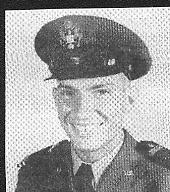
|
HUDSON, ROBERT J.
(died June 21,2009)
IDLET, WALTER B.
______________________________________
Kurt Jeff Lobaugh
After Vance AFB, Kurt went to first to Randolph AFB, TX
and B-29 training, then to Yokota AB, Japan and flew
KB-50s. They had their
second son while there. He returned to the US and
was assigned to England AFB,
LA. and KB-50s. With five or six years active duty
he left the service and
joined his father in the property and casualty
insurance business at Lodi,
CA. and soon joined the reserves flying C-130s at
McClellan AFB, CA.
Eventually he found a pilot spot with American
Airlines flying out of San Francisco
for several years until diagnosed with
cardiomyopathy and was grounded by
American. He worked at grape farming, eventually
dying at age 54. He was active in
his Masonic fraternity and local civic
organizations. His spouse Mary Ellen
(Kooyman) taught school for twenty-five years and is
retired at Lodi, CA.
They had two sons and a daughter: principal,
physician and teacher.
__________________________________________________
Luhks, Ronald A.
| Luhks, Ronald A. |
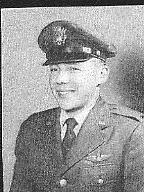
|
January 2004,Natural
| MEEK, ROBERT H. |
|
|
| 1958 (F-86, Japan) |
__________________________________
| Robert J. Miller |
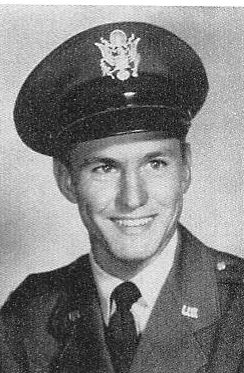
|
Robert J. Miller 
|  |
Attended Pilot Training Class 56M at Bartow AFB,
Florida and Vance AFB, Oklahoma. Following graduation from Pilot Training
he attended Multi-Engine Aircraft Training in TB-29s at Randolph AFB, Texas.
From there he went to Palm Beach Air Station, Florida for C-97 transition training. He then was assigned to Barksdale AFB, Louisiana flying KC-97s as a Co-Pilot
and Aircraft Commander. His next assignment was to the 43rd Air refueling Squadron
Larson AFB, Washington, flying the KC-135 as the Aircraft Commander and Instructor Pilot,
Larson AFB closed so the squadron moved to Fairchild AFB where he continued to fly the
KC-135 and later became a Command Post Controller. The
9th Strategic Wing at Beale AFB was his next assignment as Director of the Command Post and later Director of Training
for the SR-71. He flew the T-29 and T-38 during this assignment. From Beale AFB he
was assigned as an Investigative Officer, Investigations/Inspections Division Office of
the Inspector General, US Military Assistance Command, and Vietnam. Upon completion of
his tour with the Army in Vietnam, he was assigned to Kin Chloe AFB as Director of Command and Control. From there he went to
Langley AFB, Virginia as a Battle Staff Emergency Actions Officer on the Cinclant Airborne Command Post aboard the EC-135.
He later became a Battle Staff Commander and Vice Commander of the Cinclant ABNCP.His last
assignment was Commander of the 6th Airborne Command and Control Squadron at
LAFB, Virginia flying the EC-135 in support of the Cinclant ABNCP. Retiring
from the Air Force in May 1985, he worked as a store manager of Hardware and Sporting Goods
for one year. Because he missed flying, he quit his job and gained employment with Flight
International as a Learjet Captain. He flew the Lear worldwide logging 7000 hours. Retired now, he lives with
his wife Carole in Williamsburg, Virginia.
They were married June 13, 1954 in Waterloo, Iowa
and celebrated their 50th Anniversary this past June. They have two sons;
Craig in New York, employed as a Quality Control Inspector in Nuclear Plants and Scott a Pharmacist
in Harrisonburg,
Virginia.
Also they have two grandsons: Devin a Crew Chief on A-10s in the USAF and Shane a student at Towson University. 
|
|
MILLIGAN, JOHN
W.
(mid air St Lo, France) (February 2, 1957)
MOORE, RAY E.
___________________________________
NORDBY, CLYDE D.
_________________________________________
| PICHON, JAMES D. |
|
|
| 1999(Natural) |
| Paluso, Charles F. |
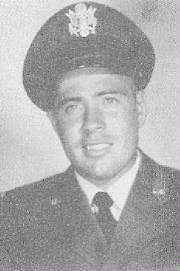
|
CHARLES F. PALUSO
1. College at Oklahoma A&M (now OSU),
from 1949 to Mar 1955.
2. Had 4 years Naval Reserve time.
3. Active duty Mar 1955. Officer orientation at Lackland.
4. Assigned to Bartow, FL for initial pilot training.
5. Finished pilot training at Goodfellow AFB, San Angelo, TX.
6. Assigned to 63rd Tactical Air Wing, Donaldson AFB, Greenville, SC.
7. Flew C-124, A&C models from 1956 to 1962.
Flew all over the world.
8. Interesting TDYs to Germany; Frankfurt, Rhein Main Air Base.
9. Had tours to New Zealand
supporting Operation Deep Freeze in 1959, 1960 and 1961.
10. In 1962 assigned to AFROTC Instructor duty after attending
Squadron Officer School and Academic Instructor School at Maxwell AFB, Montgomery, AL.
11. From 1962 to 1966 taught AFROTC
at St. Joseph's College, Philadelphia, PA. Did proficiency flying in U-3A, T-29, and C-47 at McGuire AFB.
12. From 1966
to 1970 assigned to Hickam AFB, flying C-124 aircraft and working in Wing Standardization. I think this was 61 MAW, MAC.
13.
From 1970 to 1971 attended AC-119K gunship training at Lockbourne AFB, Columbus, OH.
14. In 1971 flew AC-119K gunships
in Viet Nam, Thailand, and Laos.
15. From 1971 to 1975 assigned to the Memphis Air National Guard as Military Airlift
Command Operational Advisor for C-124C aircraft.
16. In Mar 1975 assigned to the 443 Training Wing, Altus AFB, Altus,
OK. Wing C-141 and C-5 aircraft.
17. In Mar 1983 retired from active duty and went to work for USPIRA, selling mutual
funds.
18. In 1987 went into Insurance sales and as broker in Real Estate sales.
19. In 1996 full time working for
myself in managing a sizable estate consisting of Real Estate and timber.
20. I managed to log 15,000 hours of military
and civilian time. I learned to fly in 1951 while doing smoke jumper duty with the Forest Service, Missoula, Montana.
21.
Was married to Doris in 1954 and fathered two boys and one girl. Divorced Doris in 1975 and now have Barbara.
22. My main
passion is hunting and have hunted most states in the southern 48 plus Hawaii, Turkey, Germany, and want to try Africa next.
23. Had a medical crisis in 2003, needing a four way bypass surgery on the heart.
24. Earned BS and MA degrees
and working on a doctorate. Finished Command and Staff.
25. Died in 2009. 
| CHARLES A. PFEIFFER |
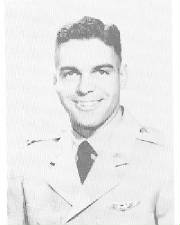
|
CHARLES A. PFEIFFER (2005)
Following completion of preflight
orientation at Lackland Air Force Base, Texas, my basic flight training bases included Spence Air Base, Georgia, Williams
AFB, Arizona and graduation at Laughlin AFB, Texas. Having no desire to become a career officer, I declined advanced crew
training with its additional service commitment and headed off to F. E. Warren AFB, Cheyenne, Wyoming for supply training.
Upon graduation in August 1956, I was briefly assigned in supply with the U-2 program at Turner AFB, Georgia. By late November
I ended up at Barksdale AFB, Louisiana, as a supply officer for a KC-97 tanker squadron. Cockpit-wise, I was assigned to “Base
Flight”. We flew VIPs around the country in converted B-25s. As my three year separation date approached in 1958,
I began to realize the Air Force was a really good life…and with a series of events too boring to discuss here,
I signed the “indefinite” contract. It had a one-year Gentlemen’s clause assigning me as the
Base Forestry Officer for Barksdale’s 19,600 acres of World War II gunnery and bombing range. It was the fruition
of my college major and the exciting life of a pilot.
My assignment in aircraft maintenance to Randolph AFB,
Texas in 1967 was pivotal. The major challenges which came to a head were: the need for flying time; My wife Joan, an Air
Force Nurse (we married in Barksdale in 1961) came down with severe Multiple Sclerosis; the work schedule, flying functional
check flights in T-38 and T-39 aircraft in support of the pilot training mission left no time to spare; still I was given
the additional duty as Operational Maintenance Squadron Commander. This duty gave me great respect for our senior NCOs and
a keen insight into the values of the young Airmen. Weekends were usually taken up on cross-country flights. We worked hard,
played hard and partied…many careers were made (and broken) at the legendary Auger Inn. Truth is the best people
I ever met in the Air Force converged at Randolph AFB in the late 1960s.
In September 1970 I applied and received
a humanitarian assignment in Maintenance Quality Assurance and flight test to Wiesbaden Air Base, Germany (Joan was residing
at a German Clinic for MS). Initially it was rough going as USAFE procedures were unlike anywhere else in the Air Force and
I was working for Officers who had long ago retired on active duty. Lady Luck again came my way and I was selected to a newly
formed CINC USAFE directed Maintenance Standardization and Evaluation Team (MSET). This team of nine officers and 35 top NCOs
hit theatre bases on schedule or any given time. These new responsibilities and the situation at home led to my last flight
in October 1973. The flight ledger recorded 3,300 plus hours of mostly behind the lines flying. Later as MSET Team Chief I
experienced high level “tough love” priorities first hand. This exposure helped me to be picked in 1975
to command a 120 man remote NATO Weapons Storage Base in Araxos, Greece. We were under logistical support from USAFE, but
mission-wise directly under Supreme Headquarters Allied Forces Europe. This was my most rewarding assignment.
It
was back to the States in 1976 for a two-year hitch with the USAF IG at Norton AFB, California. From here in 1978 I was assigned
to Quality Assurance at the McClellan Air Logistics Center in Sacramento, California. I also performed various duties at the
Center as a trouble-shooter, IG, Chief of EEOC and Environmental watchdog. The latter experience has made me a life long adversary
of the “tree-huggers”. Joan was called to heaven in 1983 and I retired as a Colonel in 1985.
Yes,
a three-year flying commitment was parlayed into a thirty-year career…no plan, no regrets; lots of lessons learned
(mostly too late) but I loved it.
I returned to Texas in 1985 to be with friends in the Randolph AFB area.
Shortly thereafter, Nancy Kutzner, an Air Force Flight Nurse was assigned locally. We have been together, with a ripple or
two in between, as “Significant Others” ever since. Prostate cancer came along in 2000. Although still
eligible for surgery or radiation, I’ve opted for intermittent hormone therapy. So far, this decision (a crap shoot
whatever therapy one chooses) is working well for me. I am enjoying the good life, puttering around with rental properties,
traveling and spending summers doing lots of fishing in Alaska.
God Speed to my fellow classmates and their
loved ones.
MILIATARY SERVICE
ORAL BIOGRAPHY
COLONEL CHARLES A. PFEIFFER, USAF (Ret.)
For UPT 56-M Classmates
(Transcribed circa-2005, updated May 22, 2010)
As a young man, Charles Pfeiffer attended Our Lady of Loretto Grade School and Xavier High School in the Cincinnati, OH.
Charles matriculated at Michigan State College (majoring in Forestry) where he received his initial military indoctrination
through the Reserve Officer Training Corps (ROTC) and was commissioned a second lieutenant in the United States Air Force
upon graduation in 1954, beginning his active duty service in early 1955.
Following completion of preflight orientation at Lackland Air Force Base, Texas, my basic flight training bases included
Spence Air Base, Georgia; Williams AFB, Arizona; and graduation/winging at Laughlin AFB, Texas.
Having no desire to become a career officer, I declined advanced crew training with its additional service commitment and
headed off to F. E. Warren AFB, Cheyenne, Wyoming for supply officer training. Upon graduation in August 1956, I was briefly
assigned in the Supply squadron with the SAC U-2 program, 4080th Strategic Reconnaissance Wing at Turner
AFB, Georgia.
By late November I ended up at Barksdale AFB, Louisiana as supply officer for a SAC KC-97 tanker squadron. Cockpit-wise,
I was assigned to "Base Flight" Rated Position Identifier (RPI) RIP-8. Our mission was to fly VIPs around the country in converted
B-25 Mitchell bombers.
As my three year separation date approached in 1958, I began to realize the Air Force was a really good 1ife ...and with
a series of events too boring to discuss here, signed the commissioned officer’s "indefinite" contract. It had a one
year Gentlemen's clause, assigning me as the Base Forestry Officer for Barksda1e AFB, LA; 19,600 acres of World War II gunnery
and bombing range. It was the fruition of my college Forestry-major, along with the exciting life of a gallant Air Force pilot.
I married Joan (Née Pucinelli) an Air Force Nurse, in the Barksdale AFB main chapel on January 28, 1961.
The Soviet’s first satellite "Sputnik" (launched in 1957) had changed SAC’s and my priorities, so in June 1961
I began a tour with the Air Force Institute of Technology at Texas Tech University, Lubbock, Texas. This led to a B.S. in
Industrial Engineering in March 1964.
I then received a directed-duty assignment to Kadena AB, Okinawa in base Civil Engineering. A year later, with the Vietnam
effort building up, I was reassigned to the command post of the 18th Tactical Fighter Wing and checked out in their T-39A
North American Sabreliner. Many of our missions were in support of 18th TFW F-105D/F Thunderchief fighter squadrons,
already fighting from Korat and Takhli RTAFB Thailand, flying strike missions in both North and South
Vietnam.
My aircraft maintenance assignment at Randolph AFB, Texas in 1967 was pivotal. The major challenges which came to a head
were: (1) devotion to my wife Joan, who became ill with severe Multiple Sclerosis; (2) the need for flying time; (3) flying
functional check flights in T-38 Talon and T-39 Sabreliner in support of the 3510th FTW undergraduate
pilot training mission (4) and the work schedule left no time to spare. Still, I was given the additional duty as 3510th
Organizational Maintenance Squadron (OMS) Commander. This duty gave me great respect for our senior NCOs and a keen insight
into the values of our young Airmen. Weekends were usually taken up on cross-country instrument-navigation proficiency flights.
We worked hard; played hard and partied (to the acceptable standards of the time) ...many careers were made (and a few were
broken) at the legendary "Auger Inn" in the basement of Bldg 500, the O-Club at Randolph AFB. Truth is the best people I ever
met in the Air Force converged at Randolph AFB in the late l960s.
In September 1970, I applied for and received a humanitarian assignment in Maintenance Quality Assurance and Flight Test
section at Wiesbaden Air Base, Germany (Joan was residing at a German Clinic, treating her MS disease). Initially it was rough
going, as USAFE procedures were unlike anywhere else in the Air Force and I was working for officers who had long ago retired-on-active-duty.
Lady Luck again came my way and I was selected to a newly formed CINC USAFE-directed Maintenance Standardization and Evaluation
Team (MSET). This team of nine officers and 35 top NCOs evaluated USAFE operations throughout the theatre, and provided wing,
NAF, and MAJCOM commander’s with their out-brief findings.
These new responsibilities and the situation at home lead to my last flight in October 1973. My AF Form 5 Flight log recorded
3,300-plus hours of flying time.
Later as MSET Team Chief, I experienced high level 'tough love' priorities first hand. This exposure and experience lead
to a 1975 command assignment for NATO’s 345 Air Munitions Company [Special Weapons Storage] a 120-man
remote assignment at Araxos Air Base, Greece. Although we were under logistical support from USAFE, mission-wise our OPCON
was directly under the control of Supreme Allied Headquarters (SHAPE). This was my most challenging and rewarding assignment.
It was back to the States in 1976 for a two-year hitch with the USAF Inspector General at Norton AFB, California. From
there in 1978, I was assigned to Quality Assurance at the McCel1en Air Logistics Center in Sacramento, California. I also
performed various duties at the Center as a trouble-shooter, IG, Chief of EEOC and Environmental watchdog. The latter experience
has made me a life-long adversary of tree-huggers. While assigned in California, my wife Joan was called to Heaven
in 1983. I then retired from the Air Force in the rank of Colonel during 1985.
Yes, a three year flying commitment was parlayed into a thirty year Air Force career ...no plan, no regrets; lots of lessons
learned (mostly too late) but I am secure in the belief that I played-the-cards dealt to me, honorably.
I retired to south-central Texas in 1985 to be with friends in the greater Randolph AFB area.
Shortly thereafter, Nancy Kutzner, an Air Force Flight Nurse, was assigned locally and we became 'Significant Others'.
Prostate cancer came along in 2000. Although still eligible for surgery or radiation, I opted for intermittent hormone
therapy.
Nancy and I were married on February 8, 2008, with a blessing of our wedding vows in Chapel #1 at Randolph AFB on May 9,
2008. A wedding reception followed in the Randolph Room at the Randolph O-Club. Nancy was radiant [Charles was a handsome
groom!]
I’ve enjoyed a good life, puttering around with rental properties, traveling, and spending my summers doing lots
of fishing in the fertile seas of Alaska.
Godspeed to my fellow UPT 56-M classmates and to their loved ones.
Charles A. Pfeiffer
Born May 19, 1932. Died May 22, 2010.
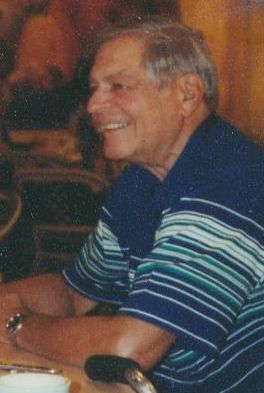
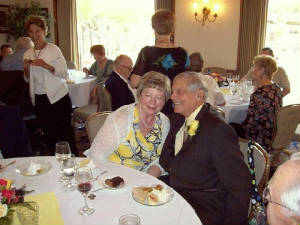
| Redinger, Thomas B. |
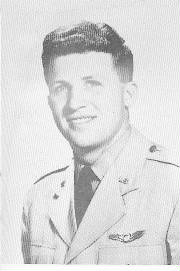
|
Thomas B. Redinger
Thomas B. Redinger, aged 78, succumbed to advanced Parkinson’s disease at The Normandy
in Rocky River, OH on Friday, March 19, 2010. He was the son of Kitty Collins and Ruel Otis Redinger, and was born in Washington,
PA on August 13, 1932. Tom was the third of four children: Patricia Redinger Lee, Ruel O. Jr, and younger brother James. The
family moved to Bay Village, OH in 1941 when Tom was nine years old and remained there until the late 1990s.
Following in his father’s, mother’s (his maternal grandfather had been a bare-fisted
prizefighter at the turn of the century) and older brother’s footsteps, Tom loved and lived sports. He lettered at Bay
High School in football, basketball and track. He was a life guard at Huntington Beach during the summers. He won a full sports
scholarship to Purdue University and played varsity football as a halfback and offensive end from 1951 through 1953. His teammate
Bernie Flowers remembered Tom scoring the touchdown during the 1952 Purdue-Illinois game, the first Purdue game ever televised,
which started Purdue’s scoring momentum for the remainder of the game. Tom remarked to his teammate that his grandfather,
Ruel Otis Redinger, an all American at Colgate, had played at this same stadium.
After his graduation from Perdue, Tom joined the USAF and flew jets for the Strategic Air Command
from 1954 to 1958. He married Jane Anne Irwin on October 15, 1956 and they had three children: Deborah Ann, Teresa Jane and
Thomas B. Jr.
Leaving the Air Force, the family settled in Rocky River, OH. Tom coached extra-curricular football
for 5th and 6th, and 7th and 8th graders. He entered the investment field, working for William J.
Mericka, J. N. Russell and others. When he formed his own investment advisor company, TBR Associates, his lifelong devotion
to sports led him to include many clients involved in professional sports, and he aided in the development of tennis and other
sports resort complexes. With a number of partners, he invested in the Bay Point property (opposite Cedar Point, OH), a peninsula
jutting into Sandusky Bay near Marblehead, OH. The partners developed Bay Point into a thriving marina and condominium resort.
Sadly Tom was diagnosed with Parkinson’s Disease in 1974 at the age of 42. His superb physical
condition probably helped to slow the progression of the disease for the remaining 36 years of his life, but he gradually
lost his ability to continue his normal physical activities and his professional career was cut short. His beloved wife Jane
and his three loving children cared for him. His many devoted and generous friends remained close and supportive throughout
his illness.
Tom was distinguished by a kind and gentle disposition. He was especially fond of young people,
and his eyes lit up when his children and grandchildren were near. He found humor in most things, and lived a satisfying and
full life despite his physical limitations brought on by Parkinson’s. He was loved by all who knew them in full measure.
He made the world a better place and he will be sorely missed.
He is survived by his wife Jane and
children Deborrah Kompanik (Gary) of Abu Dhabi, Therese of Boston, MA and Tom Jr. (Cynthia) of Gloucester, MA. He was the
loving grandfather of Lindsey, Elizabeth and Matthew Kompanik and Thomas B. Redinger III "Tucker".
|
Thomas B. Redinger
|  |
|
Married October 27, 1955 to Jane
Irwin
3 Children and 4 Grandchildren
Andrews Air Force Base
Wichita Falls, TX Auditing School
Homestead,
FL Auditor for Air Force
Flew C-119s
1958 Moved to Avon Lake, OH
1961 Moved to Rocky River, OH
2003
Moved back to Avon Lake, OH
1958 Investment Business
1964 Started Investment Advisor Fund
1969 Invested in
Bay Point Marina, Marblehead, OH (still a partner)
| |
| Redinger, Thomas B. and Jane |
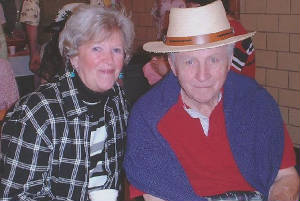
|
Lloyd R. Reeder
Overview:
Lloyd and Ruth Ann celebrated their 53rd wedding anniversary on January 17th of 2006. They have enjoyed a happy, exciting,
and eventful life together, which they have graciously shared with their four children (along with their spouses), five grand
children, five great-grand children, and countless friends and colleagues. Lloyd takes pride in his family and accomplishments
throughout his career. He played a critical role in getting the Apollo spacecraft approved for flight after the disastrous
fire on Apollo 1, and then went on to play a leading role in the successful training of astronauts for Apollo 11 and Apollo
13. His promotion to Lt. Colonel was due in part to an evaluation written by James A. Lovell, Captain USN, for his work on
Apollo 13, which was endorsed by Thomas R. Stafford, Colonel USAF, and Apollo astronaut. The last big bang in his post Air
Force career, with Lockheed Martin, was leading the launch team for the 1st Titan IV Centaur/Milstar launch on February 7,
1994.
Details: Flying and the Air Force were a very important part of his life and fortunately they were both
good to him. After graduating with you, his classmates in 56-M, Lloyd went on to San Antonio where he flew B-25's and B-29's
during multi-engine training. The next stop was McClellan AFB in Sacramento and his first date with an RC-121 Super Constellation.
After a quick trip to Montgomery for Squadron Officer's school, he returned to Sacramento and drilled holes in the sky over
the Pacific until he was transferred to Yakota AFB outside of Tokyo. At Yakota he kept current in a T-33 (becoming an instructor
pilot) while working as an Operations Officer, where he honed his skills in planning and logistics that would help him succeed
at NASA and Martin Marietta.
Three short years later Lloyd was back at McClellan for his second date with
"Connie". He participated in the Cuban Missile Crisis; flying over the ocean, right on the deck, in an RC-121 (with the radar
pointing up) providing critical radar coverage for reconnaissance aircraft over-flying Cuba.
In 1963 the Air
Force took Lloyd out of the sky and moved him underground as a Minuteman Missile Launch Crew Commander and Instructor at Whiteman
AFB in Knob Noster, Missouri. At Whiteman, Lloyd earned an MBA from the University of Missouri, and actually got to launch
a Minuteman from Vandenberg AFB as part of a test. The warhead landed in an atoll in the South Pacific, close enough to the
aiming point to have vaporized it with a real nuke. To keep current, Lloyd flew a U-3A between stints in the capsule and a
graduate school classroom.
In November of 1967 the Reeder family moved to Friendswood, Texas as Lloyd traded
an inground capsule for one designed to fly to the moon. His original assignment at NASA was as a liaison between NASA and
USAF. However, he immediately got bored and volunteered to participate in a test of the Apollo spacecraft to monitor and evaluate
redesigned components. Along with two other Air Force pilots, Lloyd completed a few months of Astronaut training, donned a
spacesuit, headed into the vacuum chamber and climbed into an Apollo spacecraft that was sitting on a turntable, surrounded
by sun lamps on one side and radiators filled with liquid nitrogen on the other, to simulate the rigors of spaceflight. He
was the first person to open the new escape hatch in a "space" environment. The 2TV-1 test went so well it was halted ahead
of schedule and the spacecraft was approved for flight. A picture of Lloyd in his spacesuit made it into a "Look" magazine
article about Apollo's race to the moon.
Participation in the 2TV-1 program brought Lloyd to the attention
of the astronaut office, and an assignment as Mission Training Coordinator for Apollo 11. He coordinated all training and
travel activities for prime and back-up crews. Demand for their time was incredible. Right before the launch he even coordinated
family visits and scheduled haircuts. Some demands on the crew came from unexpected places. For example, since both of their
sons were Eagle Scouts, Ruth Ann worked on Lloyd until he promised to ask the crew (also Eagle Scouts) to say hello to the
Boy Scouts at the 1969 Jamboree in Idaho. The crew agreed, and their greeting was written into the flight plan and delivered
during a television broadcast on their way to the moon.
As a side bar: Deke Slayton's (Mercury astronaut)
and Dave Lowe's (Director of NASA) sons were in the same troop, at the Jamboree, with Lloyd's two sons, Mike and Lloyd. However,
his two sons (Lloyd and Mike) were chosen to welcome Frank Borman (Gemini and Apollo 8 Astronaut) to close the Jamboree; a
task typically reserved for the President. Nixon was busy welcoming the Apollo 11 crew back to Earth, so he appropriately
sent an astronaut in his place.
Lloyd's responsibilities with Apollo 11 wound down during the crew de-briefing.
He claims that he was only a glorified tape recorder operator. Isn't that exactly how you would expect him to describe the
once in a lifetime thrill of sitting next to one of the original seven astronauts, Deke Slayton, while listening to an analysis
of the first landing on the moon and the flight there and back? By the way, he was present for the debriefing of the Apollo
13 crew after their fateful mission.
His work on Apollo 11 was greatly appreciated by the entire crew, so
Michael Collins wrote a letter of thanks, which he signed along with Neil Armstrong and Edwin Aldrin. Lloyd's achievements
were also recognized by the Air Force, who awarded him the Legion of Merit, which was presented by Colonel Aldrin.
As
an encore, Lloyd was appointed Mission Training Coordinator for Apollo 13. The entire family played a role in this mission.
Lloyd's sons (Lloyd and Mike) mowed Ken Mattingly's yard so he could concentrate on training and the older of his two daughters
(Ruth Ellen) exposed Ken to measles. His youngest child (Susan) played a role by keeping him entertained in the evenings.
Although Lloyd officially kept current in a C-47, he flew all around the US in T-38's and T-33's with the
astronauts. He once did a back seat landing in a T-33 that didn't wake up Fred Haise (Apollo 13) until Lloyd slowed the plane
after landing. "That's the way to grease them Reeder!" As previously mentioned, the Apollo 13 crew valued his skills and the
training that got them home. Jim Lovell wrote an OER for Lloyd that helped get him promoted to Lt. Colonel.
Like
others in your class, Lloyd participated in the South East Asian War games. In 1970 the Air Force ordered him on a third date
with "Connies", so he returned to McClellan for a refresher course before heading to Korat RAFB, Thailand in October. He flew
EC-121's that were dressed in camouflage and loaded with electronic gear, up and down trails in Laos and Cambodia as well
as North and South Viet Nam. Technicians in the back monitored sensors and called in air strikes on trucks and combatants.
One unfortunate evening they called in a strike on elephants that had escaped from a logging camp. He also flew a "special"
mission out of Saigon. The task was tracking a VC carrier pigeon, loaded with electronic tracking devices, back to its headquarters.
Strike aircraft, soldiers, and Marines were staged and waiting for a target. The operation was scrubbed when the pigeon died
of a heart attack while trying to climb to altitude with a load that was significantly above his max designed/rated takeoff
weight.
Ultimately Lloyd accrued nearly 7,000 hours in various versions of the Lockheed Super Constellation,
which proves that he truly is a "Real Man"; because everyone knows that only a "Real Man" can handle three pieces of tail
at once.
Back stateside in October of 1971, Lloyd began working with NORAD at the Cheyenne Mountain facility
in Colorado Springs, moving through a variety of staff and leadership assignments. His final command was as Chief of the NORAD
Space and Missile Intelligence Center.
Lloyd retired from the Air Force in July of 1976 to join Martin-Marietta
to work on Space Defense Command and Control Systems. He later worked on the military space shuttle launching complex at Vandenberg
AFB before the program was cancelled. Lloyd retired from Martin in January of 1995, batting 1000, after the successful launch
of the first Titan IV Centaur/Milstar combination on 7 Feb 94.
After retiring from a second successful career,
Lloyd settled into his woodworking shop and garden. He also became an avid bird and wildlife watcher in the comfort of his
own back yard on Denver High-Line Canal. Currently Lloyd resides in an Alzheimer's assisted care facility in Littleton, Colorado.
If he could remember you, he would laugh and joke with you, and enjoy sharing stories. Thank you for allowing me to tell you
his story in his place.
Respectively prepared and submitted to Class 56M by your classmate's son, Lloyd R. Reeder,
with the help and support of the entire Reeder family.
| RUBEOR, RUSSELL G |
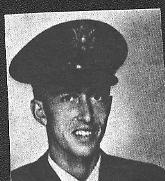
|
| May 7, 2010 |
SHOBERT, RICHARD A.
(mid air St Lo, France) (February 2, 1957)
___________________________________
| Slater, David A. |
|
|
| April 1, 2006 from ALS disease |
April 2, 1935 born in Denver, Colorado
1952 graduated from high school in Portland, Or
1954 enlisted USAF, Lackland AFB, Texas
1955 started Aviation Cadets, Lackland AFB, TX
April 27, 1956 Wings and Commission at Laughlin AFB, TX
1958/1959 Korea, peacetime
1964 Vietnam, wartime
1955 to 1965 T-33, F-86, F-100, C-123, others...2,800 hrs.
1965 to 1995 American Airlines, DC-6 to 747...16,000 hrs.
1995 to 2006: lived in San Antonio with Elfriede K., wife
2006: Died on April 1, 2006 from ALS disease
________________________________________________________________
"David A. Slater of Garden Ridge passed away Saturday April 1, 2006 after a valiant and courageous battle with ALS, also
known as Lou Gehrig's disease. Mr Slater was born April 2, 1935 in Denver, Colorado and grew up in the Pacific Northwest,
before joining the USAF in 1954. He served in both Korea and Viet Nam before joining American Airlines where he continued
his love of aviation as Captain, piloting jetliners across the Atlantic Ocean to Europe and deep into South America before
retiring in 1995 from the Dulles/Ft Worth International base. Dave had many interests and hobbies including automobile restoration,
construction projects, and spending time with a wide circle of family and friends. Survivors include: loving wife Elfriede,
son Steven Slater of New York City and grandson Brandon Christopher of Frankfurt, Germany; step-daughter Lisa Prouix of San
Antonio,TX; step-son David Prouix of Garden Ridge, TX; step-son and wife, Steven and Estela Prouix and grand-daughter Emily,
of Converse, TX; sister and brother-in-law Helen and David Kellogg of Wenatchee, WA; brother and sister-in-law Donald and
Edna Slater of Portland , OR, and brother and sister-in-law Neil and Dorothy Slater of Seattle, WA. Memorial services were
held on April 6th at the Schertz Funeral Home Chapel in Schertz, TX"
___________________________________________________
___________________________________
| SWENSON, JOHN A. |
|
|
| March 1956 (T-33, Webb) |
___________________________________
TOPPER, CHARLES W.
(B-57 RVN)
Tuttle, Duane L.
Born October 3, 1934 and died February 3, 2004
Duane attended Purdue University and graduated from Omaha University in 1964. His military career took him to Schilling,
McConnell, Forbes, Little Rock, McChord, DaNang Vietnam, Travis, Altus AFBs and numerous other places on TDYs. He retired
after serving 22 years in the U.S. Air Force, having piloted over 20 different types of aircraft.
Duane loved classical music and attended concerts. He was very precise in everything he did. Writing was a gift he enjoyed.
In his prayers he always reminded us to be mindful of the needs of others, and how thankful we should be.
He was chaplain of the Daedalians military pilots organization and helped organize numerous military reunions. Duane was
the instigator behind this Pilot Training Class 56M reunion and recommended that it be held in San Antonio, TX in April 2006
on the anniversary of our graduation from pilot school.
He was the President of the Lindsborg, KS Kiwanis Club and served on the board of the Lindsborg Community Hospital. Duane
enjoyed being a member of the Wild Dala Horse Drill Team and wrote the lyrics for each unveiling of the Dala Horses. He was
an avid community project volunteer. Duane sang in the choir, was treasurer of the Memorial Committee, member of the Fellowship
Committee, and past board member of Messiah Lutheran Church. Also, he sang in the Bethany, KS Oratorio Society. In addition,
he was a member of the Scandinavian Society, and enjoyed working at the Andersons Butik.
God granted him 17 extra years when he received his heart transplant and lived to the fullest extent. Duane was a dedicated
advocate of donor awareness and presented numerous speeches on the importance of the issue, "The Gift of Life".
He participated in 5 Transplant Olympic Games, winning 3 Gold and 4 Bronze medals.
Duane always kept his donor, Nathan, in his heart. God gave him Six Thousand, One Hundred and Seventy bonus days. The
gift of life continues on, with Duane's donation of his corneas. Thus his life touched many people.
Duane and Kally were married over 45 years. They had one son, Kevin and two daughters, DeAnn and Kea and five grandchildren.
They loved to travel whenever possible to visit family and friends.
| TUTTLE, DUANE L. |
|
|
| February 2004 (Natural) |
WIGGINS, JOHN C.
| Wiggins, John C. |
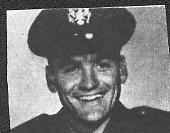
|
| Winney, Lynn E |
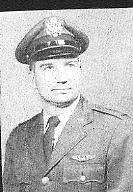
|
WINNEY, LYNN E.
F4U crash 1965
Los Angeles Air Races
|

